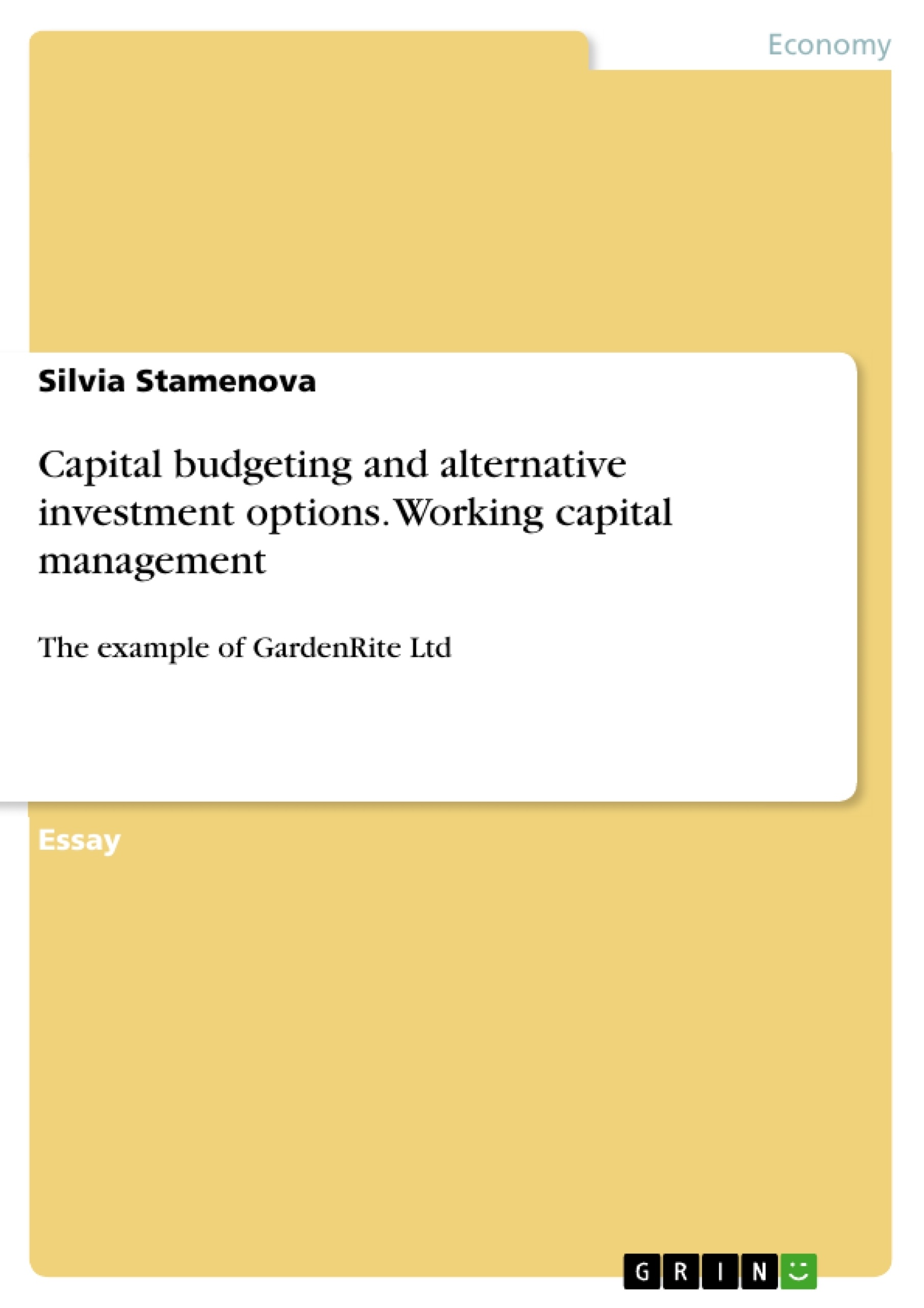This report addresses a paradox: high profit and at the same time significant debts for the company. Seen from this perspective, the profit regarded as the difference between the total revenue and the total costs and the cash flow seen as the incomings and outgoing of cash of a particular company is somehow different. One of the reasons for that is the usage of the accounting conventions of the accruals; however the issues relating to the working capital management are also of importance. In this field of development, the way changes in the working capital affect cash flow will be analyzed and important recommendations will be made.
Inhaltsverzeichnis (Table of Contents)
- Part I
- I. Profit, cash flow and how changes in the working capital affect it.
- II. GardenRite Ltd management in terms of receivables, payables and working capital
- III. Analysis and recommendations.
- Part II
- I. Capital budgeting process purpose and key stages. Investment appraisal methods
- II. Comparison of the alternative investment options.
- III. Analysis and recommendations.
Zielsetzung und Themenschwerpunkte (Objectives and Key Themes)
This report investigates the paradox of a company experiencing high profits alongside significant debt. It delves into the differences between profit and cash flow, exploring how accounting conventions and working capital management contribute to this discrepancy. The report aims to analyze the impact of changes in working capital on cash flow and provide recommendations for effective management.
- The relationship between profit and cash flow
- The impact of accounting conventions on cash flow
- The importance of working capital management
- Analyzing the effects of changes in working capital on cash flow
- Developing recommendations for effective working capital management
Zusammenfassung der Kapitel (Chapter Summaries)
Part I
I. Profit, cash flow and how changes in the working capital affect it.
This chapter explores the concepts of profit and cash flow and how they differ. It highlights the influence of accounting conventions and working capital on the relationship between these two financial metrics. The chapter also examines how changes in working capital affect cash flow, demonstrating that an increase in working capital can reduce cash flow while a decrease can make more cash available.
II. GardenRite Ltd management in terms of receivables, payables and working capital
This chapter focuses on the specific case of GardenRite Ltd, which despite a high turnover and operating profit, faces significant debt. The chapter examines the company's management of receivables and payables, identifying a major issue with the high level of trade receivables and suggesting a need for improved receivables collection processes. It concludes that GardenRite Ltd's working capital management is inadequate and leads to cash flow challenges.
III. Analysis and recommendations
This chapter analyzes the issues identified in the previous chapters and provides specific recommendations for improving GardenRite Ltd's cash flow. The recommendations focus on establishing clear credit policies, monitoring trade payables, and implementing a closer partnership with customers and suppliers. The chapter emphasizes the importance of avoiding excessive cash tied up in working capital and achieving an optimal balance between potential benefits and costs.
Schlüsselwörter (Keywords)
The key topics and terms in this report include profit, cash flow, working capital, receivables, payables, credit policies, cash management, and accounting conventions. The report also emphasizes the importance of effective working capital management and its impact on cash flow and overall company performance.
- Quote paper
- Bachelor Silvia Stamenova (Author), 2017, Capital budgeting and alternative investment options. Working capital management, Munich, GRIN Verlag, https://www.grin.com/document/427075



